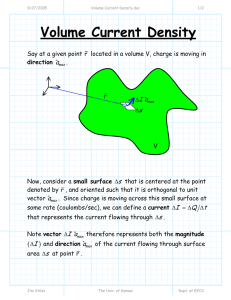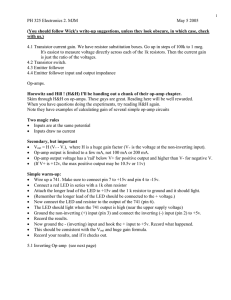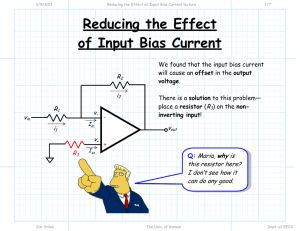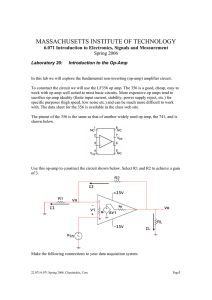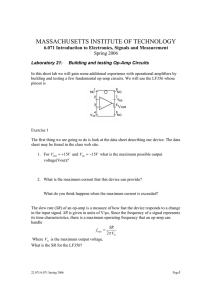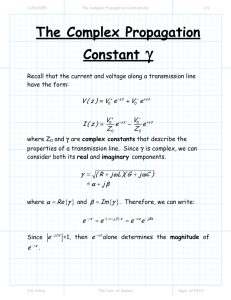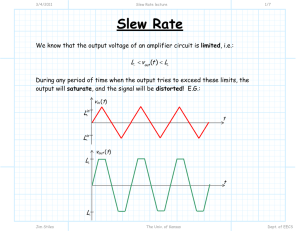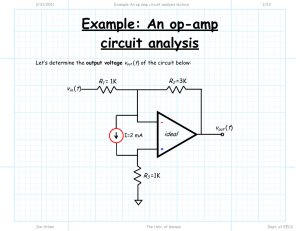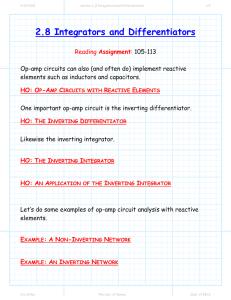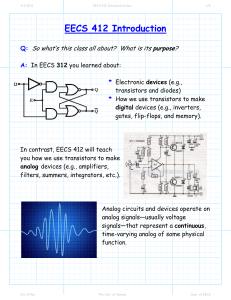The Virtual Short
advertisement
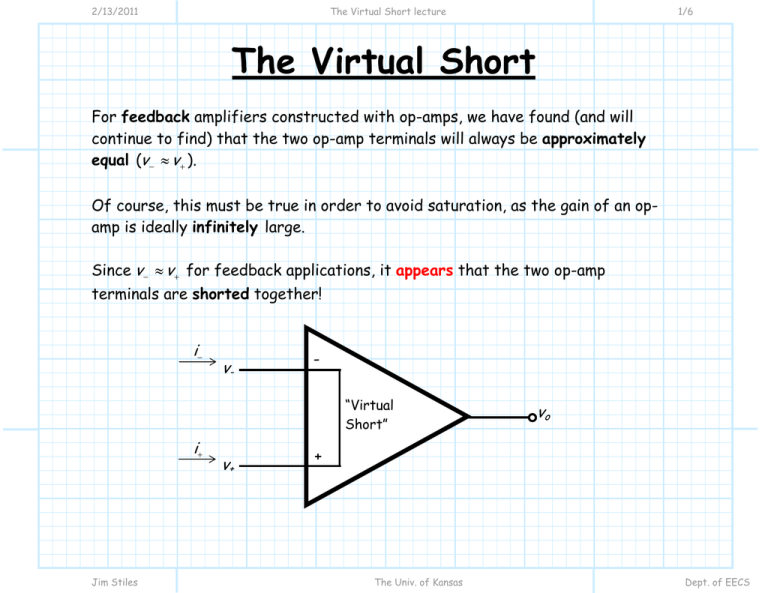
2/13/2011 The Virtual Short lecture 1/6 The Virtual Short For feedback amplifiers constructed with op-amps, we have found (and will continue to find) that the two op-amp terminals will always be approximately equal (v − ≈ v + ). Of course, this must be true in order to avoid saturation, as the gain of an opamp is ideally infinitely large. Since v − ≈ v + for feedback applications, it appears that the two op-amp terminals are shorted together! i− v- “Virtual Short” i+ Jim Stiles v+ vo + The Univ. of Kansas Dept. of EECS 2/13/2011 The Virtual Short lecture 2/6 There is no short inside the op-amp! The condition in op-amp feedback amplifiers where v1 = v2 is known as the “virtual short”. Remember, although the two input terminal appear to be shorted together, they are most certainly not! If a true short were present, then current could flow from one terminal to the other (i.e., i− = −i+ ). However, we know that the input resistance of an op-amp is ideally infinite, and thus we know that the input current into an op-amp is zero. v- i− = 0 open circuit v+ i+ = 0 vo + Therefore, it is not the op-amp that enforces the condition v1 = v2 , it is the feedback that makes this so! Jim Stiles The Univ. of Kansas Dept. of EECS 2/13/2011 The Virtual Short lecture 3/6 The virtual short: your new BFF Applying the concept of a virtual short can greatly simplify the analysis of an op-amp feedback amplifier. For example, consider again the inverting amplifier: R2 i2 vin R1 i1 vi− = 0 v+ Jim Stiles - ideal oc vout + The Univ. of Kansas Dept. of EECS 2/13/2011 The Virtual Short lecture 4/6 The virtual ground This time, we begin the analysis by applying the virtual short condition: v− ≅ v+ Since the non-inverting terminal is grounded (v+ = 0), the virtual short means that the non-inverting terminal is likewise at zero potential (v- = 0)! We refer to this condition as a virtual ground. R2 i2 vin R1 v− = 0 - i1 ideal v+ = 0 Jim Stiles oc vout + The Univ. of Kansas Dept. of EECS 2/13/2011 The Virtual Short lecture 5/6 Isn’t this simpler? Analyzing the remainder of the circuit, we find: R2 i− = 0 i2 vin R1 v− = 0 - i1 oc vout ideal v+ = 0 Combining, we find: i1 = i2 + i− = i2 + i1 = vin −v − vin = R1 R1 oc oc v − −vout −vout i2 = = R2 R2 oc vin −vout = R1 R2 Rearranging, we again find the open-circuit, closed-loop voltage gain: oc vout −R Avo = = 2 vin R1 Jim Stiles The Univ. of Kansas Dept. of EECS 2/13/2011 The Virtual Short lecture 6/6 Your TA is even smarter than this guy! Note this is exactly the result we found before, yet in this case we never considered the op-amp equation: oc vout = Aop (v + − v − ) The virtual short equation (v + = v − ) replaced the op-amp equation in our analysis of this feedback amplifier. Eeffectively, the two equations say the same thing (provided Aop is infinitely large, and we have negative feedback in the circuit). Jim Stiles The Univ. of Kansas Dept. of EECS
